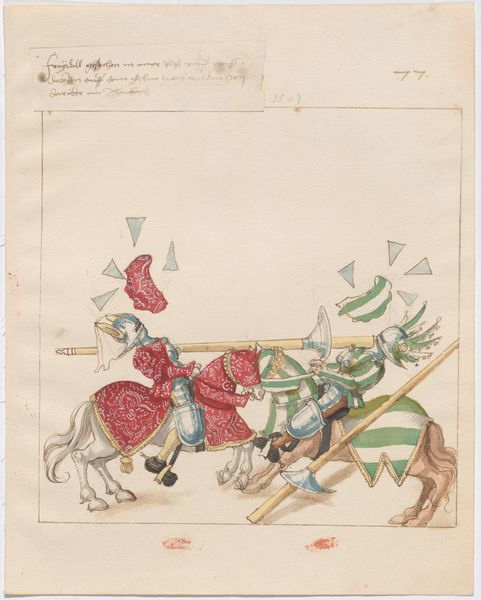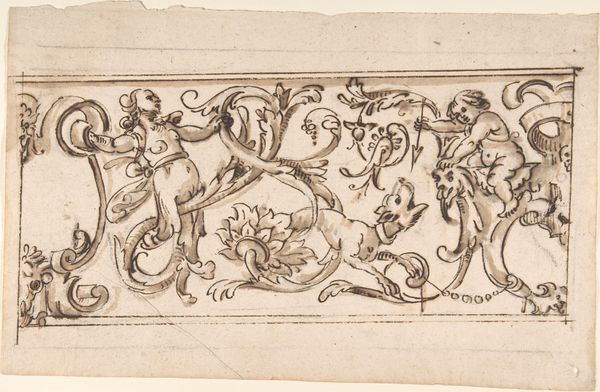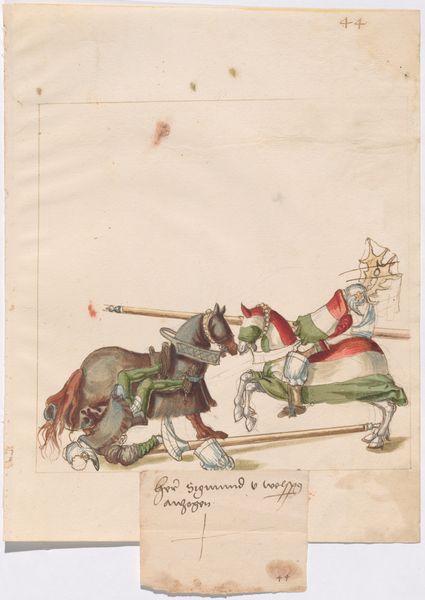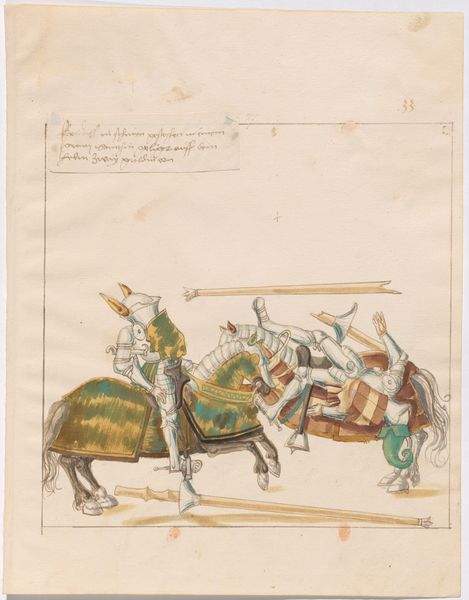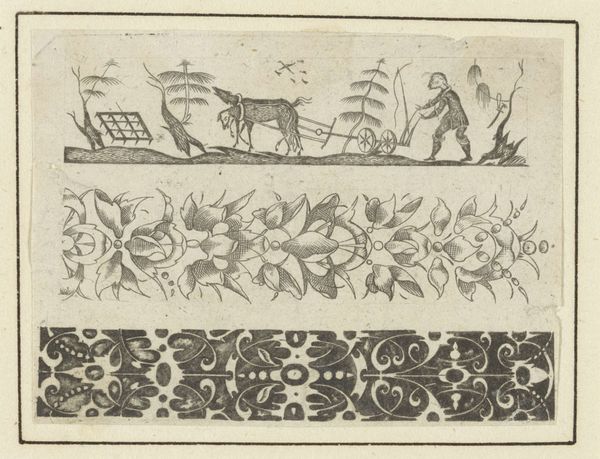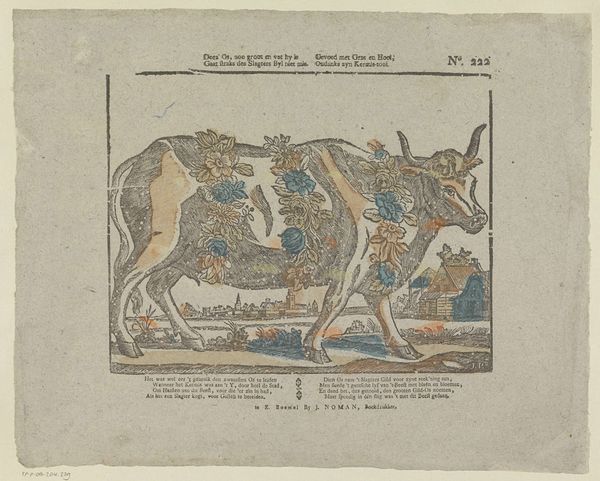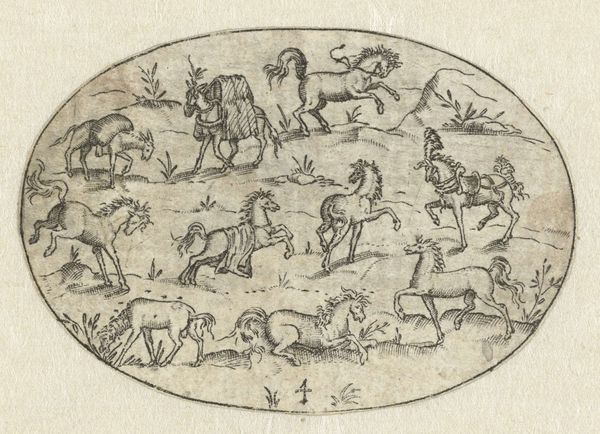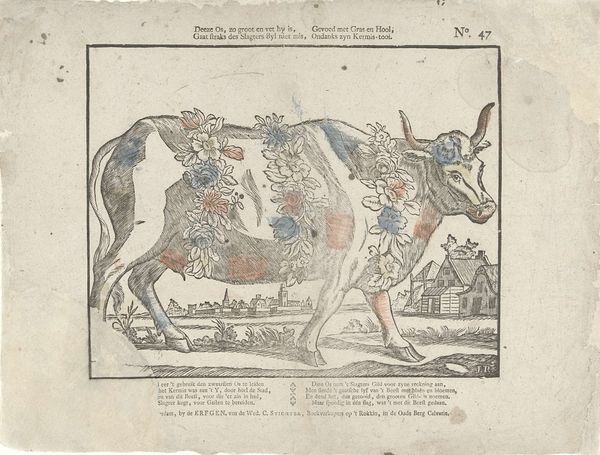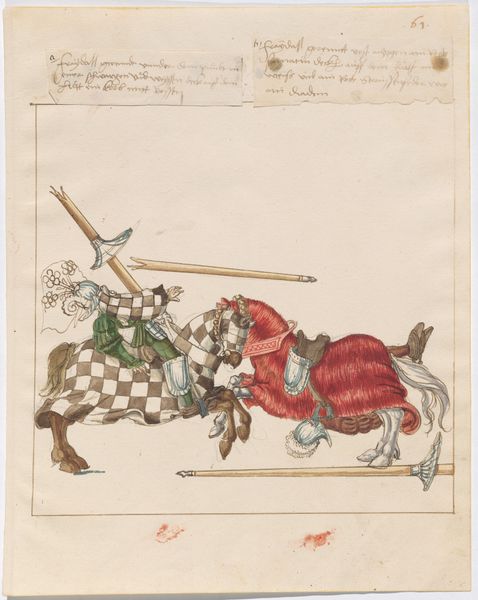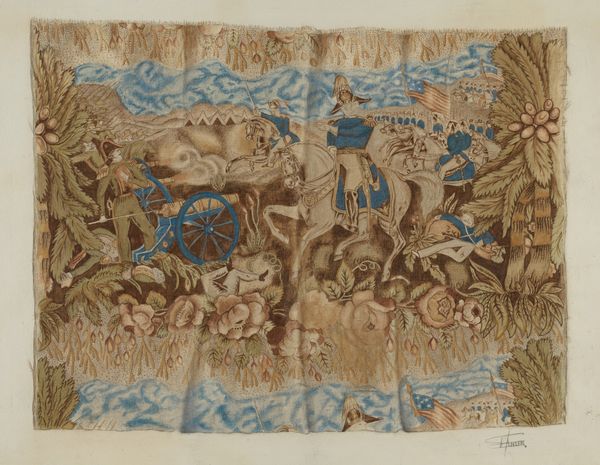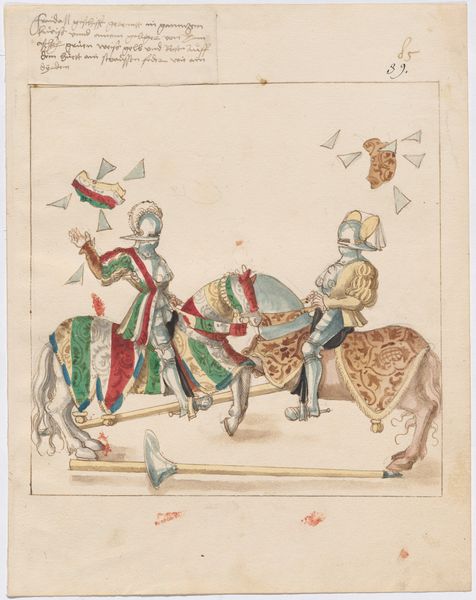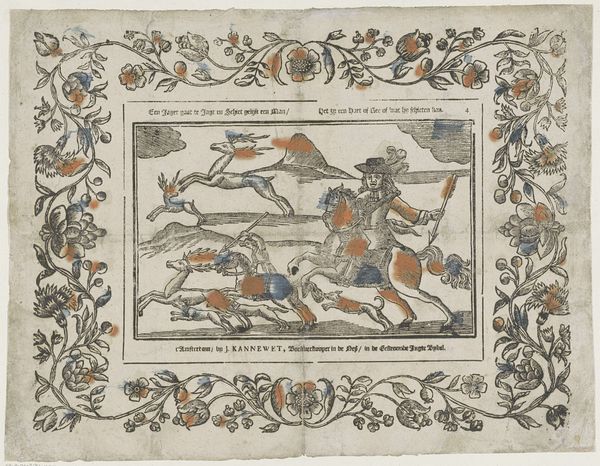
drawing, print
#
drawing
#
medieval
#
narrative-art
# print
#
romanesque
#
history-painting
Copyright: Rijks Museum: Open Domain
Curator: Let's turn our attention to this piece—a postcard designed by Richard Nicolaüs Roland Holst. Titled "Prentbriefkaart aan Willem Bogtman," it predates 1929 and resides here at the Rijksmuseum. Holst seems to be referencing the famous Bayeux Tapestry. Editor: Right away, I'm getting a sense of historical weight, but playfully delivered. It’s almost like Holst is winking at us across time. The simplified forms, the earthy colors—there’s a charming directness that counters the grandiosity of history painting. What do you make of the way he's echoing Romanesque art? Curator: Well, that visual strategy speaks to the core of the tapestry's form, its medium. Holst simplifies complex narratives into essential compositional elements. The linear arrangement of figures on horseback, for example, mirrors the tapestry’s frieze-like structure. Holst strips away unnecessary detail, highlighting the stark relationship between figure and ground. See the repeated triangular motifs above and below the image's "main action". The narrative is flattened—the drawing is more symbol than illustration. Editor: Yes, exactly! The symbolism is almost dreamlike, like a half-remembered myth. Those angular shapes feel less decorative and more like primitive ideograms. It is as if history is being told in whispers here. Holst finds a wonderful way to let us in on the myth without demanding too much. Curator: Holst was deeply engaged with medieval artistic conventions, which ties into the revival of those styles in the late 19th and early 20th centuries. We can interpret this piece as Holst trying to decode history, but for a contemporary audience. Editor: A decoder ring for the Bayeux Tapestry, perhaps? That’s a fitting encapsulation. For me, this little card embodies an enormous sense of history made gentle, less about the specifics of battles and reigns, and more about human connection. Curator: Yes, I agree; the human condition is at the very center of Holst's drawing. He’s looking into the past, processing and sharing history with great intention and sensitivity.
Comments
No comments
Be the first to comment and join the conversation on the ultimate creative platform.
